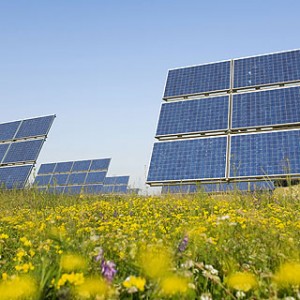If you think there are zero direct emissions from the production of electricity from PV solar modules, YOU’RE ABSOLUTELY CORRECT. There are however, indirect emissions associated with production, transport, installation and refresh / recycle are dependent on the technologies used in those processes. Most are associated with the use of fossil fuels and nuclear power to manufacture and move solar modules.
Three observations stand out David Biello’s article, “Dark Side of Solar Cells Brightens,” Scientific American, Feb. 2008.
- Indirect emissions are derived from the fossil fuels used to generate the electricity for PV manufacturing facilities.
- Heavy metals, such as cadmium, used to manufacture PV solar modules, can be recovered from mining wastes and coal ash.
- Overall toxic emissions are 90 to 300 times lower than those from coal power plants.
Biello based his discussion on “Emissions from Photovoltaic Life Cycles” in Environmental Science & Technology,Vol 42, No 6, 2008. The author, Vasilis Fthenakis, is a researcher with Brookhaven National Labs.
In earlier research, Fthenakis and his colleagues noted that the thickness of cadmium in the cadmium telluride, CdTe, layer of thin film CdTe PV was 5 microns in 1998 and expected to drop to 0.2 microns as the technology matured. To put that in perspective, a layer 5 microns thick is 14 grams per square meter; a layer 0.2 microns thick is 0.55 g/m2. Accounting for waste and process inefficiency, Fthenakis says “we estimate between 1 -2 g/ m2 would be needed for a mature technology.” This is discussed in “Thin-Film Cadmium Telluride Photovoltaics: ES&H Issues, Solutions, and Perspectives,” published in February, 1998 by the National Renewable Energy Laboratory, NREL. (Information / PDF)
This article states:
- One nickel cadmium flashlight battery has about as much cadmium (7 g) as a square meter of PV module.
- A typical cordless power tool will have 5-10 batteries.
- Solar modules have a life-span of 30 years – six to 10 times the life-expectancy of a NiCd battery.
The article continues:
“Today’s utility coal plants … produce heavy-metal pollution. Among these pollutants are cadmium, which goes up the stack [and into the biosphere or fly ash] at a rate of about 4 g/MWh. One square meter of module at 10% efficiency produces 180 kWh in an average U. S. location each year. If there are 2 g of Cd used to make the module, PV would use 0.4 g/MWh, one-tenth the amount sent up the stack by coal burning. Meanwhile the module would be using an inert form of cadmium that can be recycled.”
